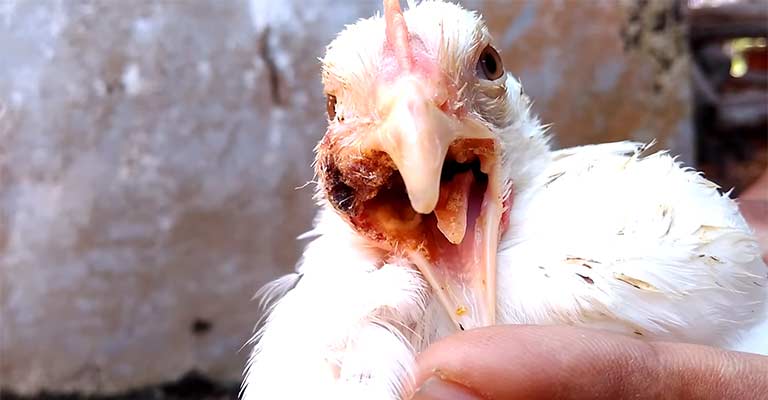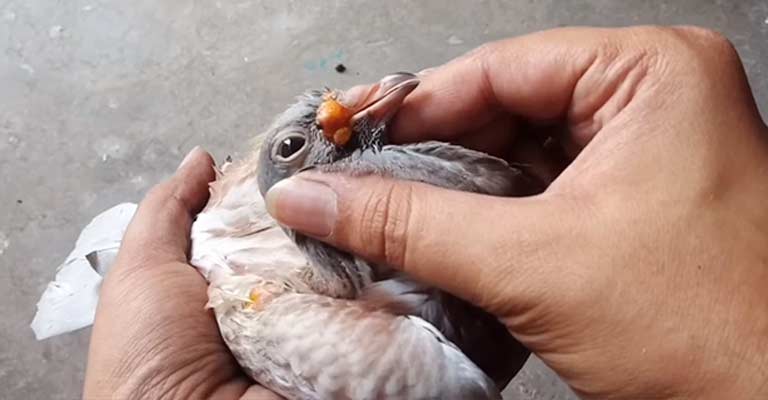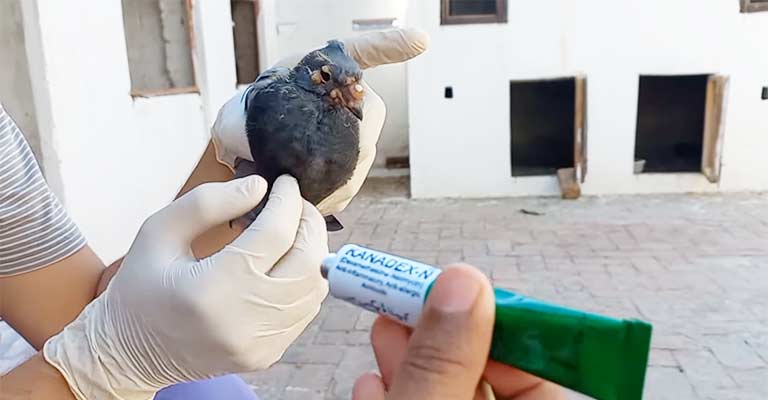Avian poxviruses, a group of double-stranded DNA viruses, pose a significant threat to avian populations worldwide, impacting the health and well-being of various bird species.
As vectors of infection, these poxviruses can cause a range of clinical manifestations, from mild cutaneous lesions to severe systemic disease, affecting birds of all sizes and ecological niches.
This comprehensive exploration delves into the intricacies of Poxvirus infections in birds, aiming to shed light on the pathogenesis, epidemiology, and ecological consequences of these viral encounters.
From wild to domestic avian species, the insidious nature of Poxviruses challenges the delicate balance within ecosystems, warranting a closer examination of their impact. Join us on a journey through the avian realm as we unravel the complexities surrounding
Poxvirus infections, seeking to enhance our understanding and contribute to the development of effective management and prevention strategies in avian healthcare.

Poxvirus Infections in Birds: Navigating the Complex Terrain
Avian poxviruses, a diverse group of double-stranded DNA viruses, have emerged as significant pathogens affecting a wide range of bird species.
Avian poxviruses are classified into several genera, with the most common being Avipoxvirus. These viruses primarily infect the skin and mucous membranes of birds, leading to the development of characteristic lesions.
Pathogenesis and Clinical Manifestations
The pathogenesis of avian poxvirus infections involves the introduction of the virus through breaks in the skin or mucous membranes. Once inside the host, the virus replicates locally, leading to the formation of characteristic pox lesions.
The severity of the disease can vary, with some birds exhibiting mild clinical signs, while others may suffer from systemic infections, impacting internal organs and leading to more severe consequences.
Clinical manifestations include nodular growths on the skin, beak, feet, and eyes. In severe cases, affected birds may experience respiratory distress, lethargy, and a decline in overall health.
The clinical diversity of avian poxvirus infections highlights the importance of recognizing and differentiating between various forms of the disease for effective management.
Transmission Dynamics
Avian poxviruses are primarily transmitted through vectors such as mosquitoes, mites, and other biting insects. The mechanical transfer of the virus from infected to susceptible birds occurs when these vectors feed on blood or skin, facilitating the spread of the virus.
Additionally, direct bird-to-bird transmission can occur through contact with contaminated surfaces or through respiratory droplets in cases of the diphtheritic form.
Understanding the transmission dynamics is crucial for implementing targeted control measures to curb the spread of avian poxviruses within and between bird populations.
Impact on Wild and Domestic Avian Populations
Avian poxvirus infections have been documented in a wide range of bird species, from wild birds to domestic poultry. The impact on wild populations can be particularly concerning, especially in cases where the virus affects endangered or vulnerable species.
In domestic settings, outbreaks can result in economic losses for the poultry industry due to reduced productivity and increased mortality.
The effects of avian poxvirus infections extend beyond individual birds, influencing population dynamics, community structure, and ecosystem health.
Research in this area contributes valuable insights into the intricate relationships between pathogens, hosts, and the broader environment.
Diagnosis and Control Strategies
Accurate and timely diagnosis is crucial for the effective management of avian poxivirus infections. Various diagnostic techniques, including PCR, virus isolation, and histopathology, play a key role in confirming infections and differentiating between viral strains.
Understanding the genetic diversity of avian poxviruses can aid in the development of targeted vaccines and control strategies.
Control measures often involve the reduction of vector populations, biosecurity practices in domestic settings, and, in some cases, vaccination programs.
Integrating these strategies can help minimize the impact of avian poxviruses on bird populations and reduce the risk of spillover into new areas.
Can Pigeons Recover From Pox?

Pigeons, like many bird species, are susceptible to avian poxvirus infections, a viral disease caused by several strains of poxviruses.
The recovery of pigeons from avian pox depends on various factors, including the severity of the infection, the specific strain of the virus, the overall health of the bird, and timely intervention.
Clinical Presentation in Pigeons
Pigeons infected with avian pox may exhibit a range of clinical signs. Cutaneous pox, characterized by wart-like growths on the skin, feet, and beak, is a common manifestation.
In severe cases, the lesions may hinder the bird’s ability to eat, drink, or fly, leading to a decline in overall health. Respiratory pox, affecting the mucous membranes of the respiratory and digestive tracts, can also occur and may result in labored breathing and lethargy.
Recovery Factors
The recovery of pigeons from avian pox is influenced by the interplay of several factors. Young, healthy pigeons with robust immune systems generally have a better chance of recovery than older or immunocompromised individuals.
The specific strain of the poxvirus can also affect the severity of the disease, with some strains causing more aggressive clinical signs.
Natural Immunity and Immune Response
Pigeons that have recovered from avian pox typically develop immunity to the specific strain they encountered. This acquired immunity can protect against reinfection with the same strain.
However, pigeons remain susceptible to other strains of avian poxviruses, and the duration of immunity may vary.
The immune response to avian pox involves the production of antibodies that target the virus, as well as the activation of cellular immune mechanisms. Pigeons with a robust and well-functioning immune system are better equipped to mount an effective defense against the virus.
Role of Veterinary Care
Providing appropriate veterinary care plays a crucial role in the recovery of pigeons from avian pox. Mild cases of the disease may resolve on their own with supportive care, while severe cases may require intervention.
Veterinary treatments may include the removal of proliferative lesions, topical antiseptic applications, and, in some cases, antibiotic therapy to prevent secondary bacterial infections.
Veterinarians may also recommend supportive care measures, such as providing a nutritious diet, ensuring access to clean water, and creating a stress-free environment to facilitate recovery.
Monitoring the bird’s progress and adjusting the treatment plan as needed are essential aspects of veterinary care.
Prevention Strategies
Preventing avian pox in pigeons is crucial for maintaining the health of flocks. Vaccination is a key preventive measure, and pigeon fanciers and breeders often incorporate poxvirus vaccines into their health management programs.
Vaccination helps prime the immune system, reducing the severity of clinical signs if the bird is exposed to the virus.
In addition to vaccination, implementing good biosecurity practices is essential to prevent the introduction and spread of avian pox. This includes minimizing contact between healthy and infected birds, controlling insect vectors, and maintaining clean and hygienic living conditions for pigeons.
How Do You Treat Pox In Birds?

Avian pox, caused by various strains of poxviruses, poses a significant health threat to birds worldwide. Effective treatment involves a multifaceted approach addressing both the viral infection and secondary complications.
While there is no specific antiviral cure for avian pox, supportive care, and targeted interventions can aid in the recovery of affected birds.
Veterinary Examination and Diagnosis
Prompt diagnosis is essential for initiating appropriate treatment. A veterinary professional will conduct a thorough examination of the bird, considering clinical signs, lesion characteristics, and overall health status.
Various diagnostic tools, including polymerase chain reaction (PCR), virus isolation, and histopathology, may be employed to confirm the presence of avian poxvirus.
Supportive Care Measures
Supportive care plays a crucial role in the treatment of avian pox. This includes providing a stress-free environment, maintaining optimal nutrition, and ensuring access to clean water.
Adequate nutrition is especially important for supporting the bird’s immune response during recovery. Birds with oral or respiratory lesions may benefit from soft food or nutritional supplements.
Lesion Management
Managing proliferative lesions is a key aspect of treatment. Veterinarians may opt to manually remove wart-like growths, especially if they obstruct the bird’s ability to eat, drink, or see.
Careful handling and proper hygiene are essential during lesion removal to prevent further stress and minimize the risk of secondary infections.
Topical antiseptic applications, such as povidone-iodine, may be recommended to minimize bacterial contamination of lesions. These applications help control the spread of secondary bacterial infections, which can exacerbate the clinical condition.
Antibiotic Therapy
In cases where secondary bacterial infections are suspected or confirmed, veterinarians may prescribe antibiotic therapy. Antibiotics help address bacterial complications that can arise due to open lesions, reducing the risk of systemic infection.
The choice of antibiotics will depend on the specific bacteria involved, and treatment duration is typically determined by the response to therapy.
Pain Management
Pox lesions, especially when present in sensitive areas, can cause discomfort and pain for affected birds. Veterinarians may consider pain management strategies to enhance the well-being of the bird during the recovery period.
Analgesics or anti-inflammatory medications may be prescribed based on the individual bird’s needs.
Isolation and Quarantine
To prevent the spread of avian pox within a flock or among wild birds, affected individuals should be isolated from healthy birds. Quarantine measures are essential to contain the virus and minimize the risk of transmission.
Strict biosecurity practices, such as disinfection of equipment and restricting access to affected areas, help prevent the introduction of the virus to uninfected birds.
Vaccination as a Preventive Measure
While vaccination is not a treatment for active avian pox infections, it is a crucial preventive measure. Vaccination helps prime the immune system, reducing the severity of clinical signs if the bird is exposed to the virus.
Vaccination is particularly important in situations where avian pox is endemic or poses a significant threat to bird populations.
Environmental Management
Effective management of the bird’s living environment is essential for recovery. This includes providing clean and dry bedding, minimizing exposure to biting insects (potential vectors of the virus) and maintaining good overall hygiene.
Environmental stressors can compromise the bird’s immune system, so optimizing living conditions aids in the recovery process.
FAQs
What bird species are most susceptible to avian poxvirus infections?
Avian poxviruses can infect a broad range of bird species, including wild and domestic birds. Susceptibility varies among species, but common victims include songbirds, waterfowl, raptors, and domestic poultry.
How are avian poxviruses transmitted, and can humans be infected?
Avian poxviruses are primarily transmitted through vectors like mosquitoes and mites. While these viruses are not known to infect humans, the potential for zoonotic transmission is low.
What are the economic implications of avian poxvirus infections in domestic poultry?
Avian poxvirus outbreaks in domestic poultry can lead to economic losses due to reduced egg production, slower growth rates, and increased mortality.
Are there effective vaccines available for preventing avian poxvirus infections in birds?
Yes, vaccines are available for certain avian poxviruses, particularly in the context of domestic poultry. These vaccines, administered through various routes, have proven effective in preventing severe outbreaks and reducing the economic impact of the disease.
How can individuals help prevent the spread of avian poxviruses in their local bird populations?
Individuals can contribute to the prevention of avian poxvirus spread by promoting bird-friendly environments, minimizing standing water to reduce mosquito breeding grounds, and maintaining clean feeding areas.
Conclusion
The study of Poxvirus infections in birds reveals a nuanced and challenging landscape, where these viral agents exert a considerable influence on avian populations.
As we navigate the intricate web of pathogenesis, transmission dynamics, and ecological repercussions, it becomes evident that a holistic approach is essential for mitigating the impact of avian poxviruses.
By enhancing our understanding of host-virus interactions and refining diagnostic tools, we can better safeguard the health of bird populations and the ecosystems they inhabit.
In the face of emerging infectious diseases and their potential consequences for global biodiversity, the knowledge gained from studying avian poxviruses not only contributes to avian health but also provides valuable insights into broader issues of wildlife conservation and ecosystem resilience.
As we move forward, a commitment to proactive research and the implementation of evidence-based interventions will be crucial in preserving the rich tapestry of avian life on our planet.